History of Fashion 1930s – 1940s
History of Fashion 1930s – 1940s
‘It is no longer smart to be so boyish. You must be the essence of romance at evening’
Vogue March 1938
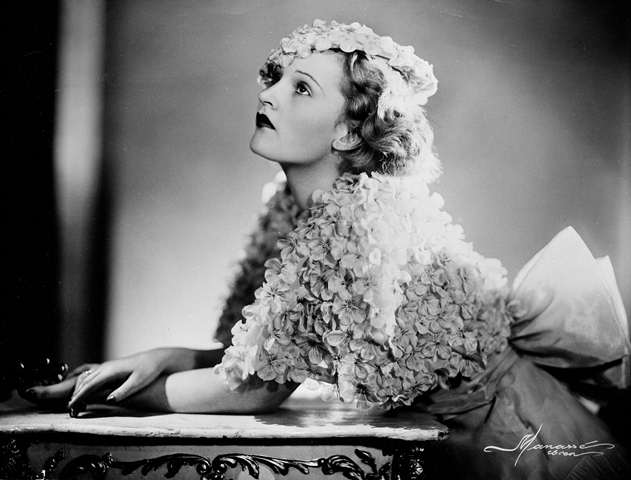
Copyright © AFP / Collection Roger-Viollet
The Thirties
The Wall Street crash in 1929 started a fundamental change to how people lived their lives. The previous decade showed people living beyond their means and due to the stock market crash unemployment was high. With no money to spend companies started researching cheaper methods of manufacturing clothes and cheaper fabrics were being created to replace the decadent fabrics of the Twenties.
Art and Culture
With film becoming increasingly popular it was seen as a perfect medium for fashion. Parisian designers quickly realised that film would be the future of fashion and first to understand the power fashion and film could create was Coco Chanel who signed a contract to design costumes for the stars of United Artists.
“Gone with the Wind” was a hugely popular film of the decade which showed the effects of the Great Depression. Notably Vivien Leigh can be seen making a dress out of a pair of velvet curtains due to not being able to afford new fabrics. This decade began the introduction of fashion photography as it was now more widely recognized as an art form. Lee Miler was seen as a front runner in fashion photography for the period. She shot for Vogue and was an active part of the surrealist movement.
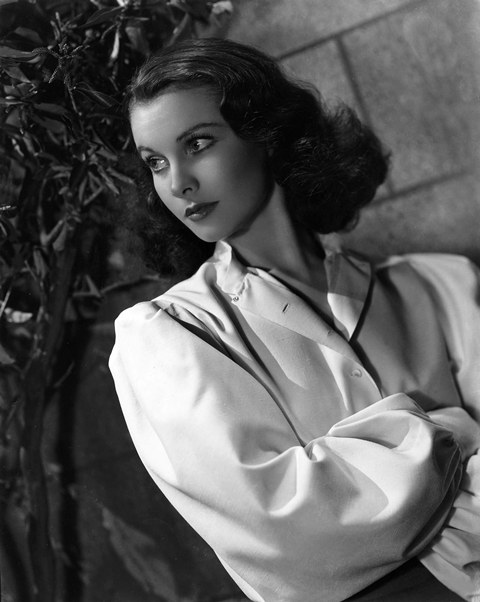
Copyright © AFP / Laszlo Willinger / Kobal / The Picture Desk – Vivien Leight
There was a surge in subscriptions for Vogue and Conde Nast during the thirties. People were interested in focussing on the higher points in life with fashion, art and culture – which was a distraction from the depressing stock market crash.
Shapes and Silhouettes
There was a return to lady-like glamour in the Thirties. Dresses were designed to show off the curves of women. The clothes accentuated the waist, but not in an extreme way like the corset wearing years of previous decades. Eveningwear was more glamorous, taking inspiration from the film stars. Lower backs were exposed showing skin in a sexy but sophisticated way. There was a business like influence with two piece outfits being worn. Simple blouses and wrap skirts were seen with V-neck cardigans or jackets.
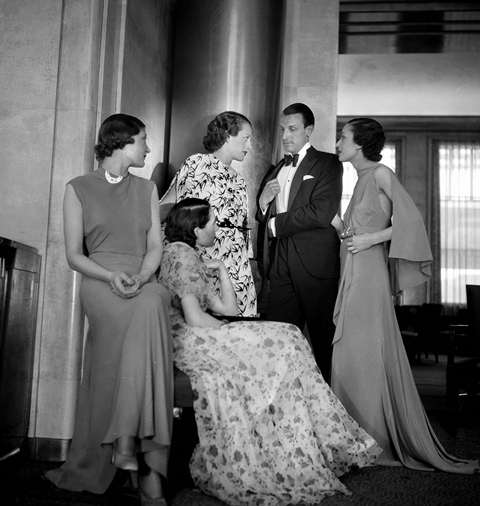
Copyright © AFP / Lipnitzki / Roger-Viollet
Accessories
Hats were still a key accessory during the thirties. Small plate shaped hats were worn, showing off the forehead. Women also started wearing scarves around their heads, holding their hair in place. The invention of Nylon in 1938 led to the introduction of knitted hosiery. No longer was there a problem of saggy stockings. A sheer allure and taut stocking enhanced the appearance of women’s legs.
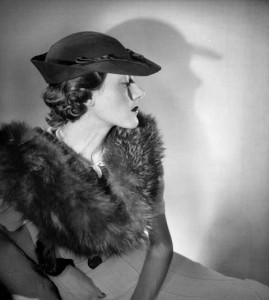
Copyright © AFP / Lipnitzki / Roger-Viollet
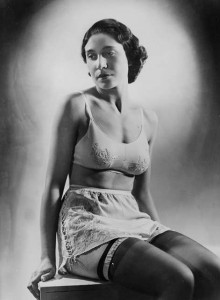
Copyright © AFP / Collection Roger-Viollet
Menswear
There was a lot of tailoring used at the beginning of the Thirties with ¾ length belted coats. However, towards the end of the Thirties a more casual wear developed. Plus furs were worn and men’s hats were also popular with the Fedora style being made out of soft fabrics such as felt.
The Icons
The Twenties icons carried through to the Thirties. Greta Garbo and Marlene Dietrich were still considered the It girls of their day and were still idolized.
The Designers
Elsa Schiaparelli was known for her feminine fantasy clothes that often had a surrealist twist. She was an Italian designer and seen as a rival to Chanel. Showing unique detailing via embroidery, as well as colours and patterns, she once claimed “Never fit a dress to the body, but train the body to fit the dress”. Schiaparelli also pioneered the zip, which was used before only on shoes and navy windcheater jackets. Her use of coloured zips was both functional and decorative.
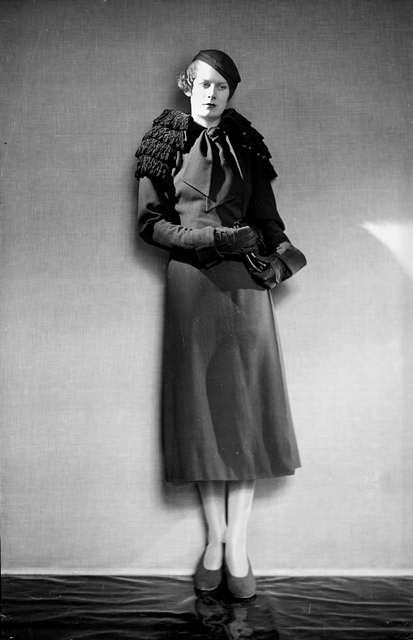
Copyright © AFP / Lipnitzki / Roger-Viollet – Elsa Schiapparelli 1935
Known for using the cut cross bias method, Madeleine Vionnet used the technique to add a flirtatious and graceful look to the garment. Vionnet took circles, rectangles and triangles and turned them into fluid sculptures using silk crepe Romain, which was her favourite fabric. Inspired by the modern dance of Isadora Duncan, she created designs that showed off the female’s natural shape. Vionnet was influenced by ancient Greek art in which the garments floated freely around the body. She took this influence and used the bias cut to give motion and movement to her designs.
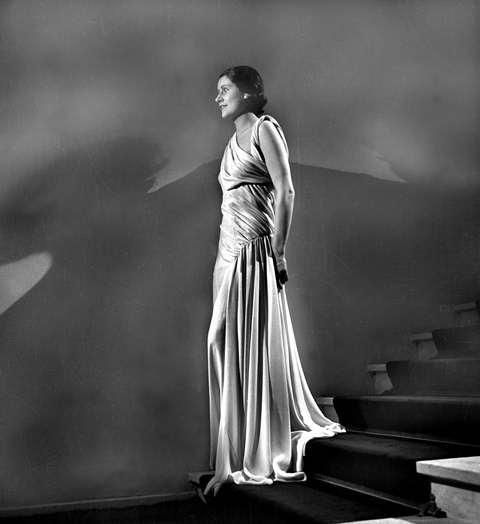
Copyright © AFP / Lipnitzki / Roger-Viollet – Vionnet dress September 1935
Salvatore Ferragamo is known for his elegant and sometimes strange shoe designs. After studying shoe making in his native Italy he worked briefly making shoes in a factory. In 1923 he emigrated to America and opened a shoe shop in Santa Barbara, California. Finding success with his shoe designs, he became popular with the stars. However, interested in how the shoes were uncomfortable he studied anatomy at the University of Southern California. He was known to work with unusual fabrics and materials including fish skin, sea leopard, lace and crystal. He also was an innovator with new shoe shapes including the platform shoe, which he launched in 1938.
Retail
Bergdorf Goodman
Known as a luxury department store, Bergdorf Goodman’s originated in 1899 when Herman Bergdorf opened a tailor shop in downtown Manhattan. Bergdorf soon hired an apprentice; Edwin Goodman. Within two years enough interest was created in the business, now known as Bergdorf Goodman. Moving location to 32nd Street, close to Fifth Avenue, Goodman bought out Bergdorf’s interest in the company. Moving again to 616 Fifth Avenue (now Rockefeller Center) in 1914, Bergdorf Goodman became the first couturier to introduce ready to wear fashion making Bergdorf Goodman a fashion destination. Finally moving once more, Bergdorf Goodman set up on 5th Avenue and 58th Street in 1928. Throughout the thirties Bergdorf Goodman saw a rise to success with Goodman purchasing the surrounding buildings leading to him owning the whole block and being granted expansion. With the business since thriving, it is still in operation and still seen as a fashion destination today.
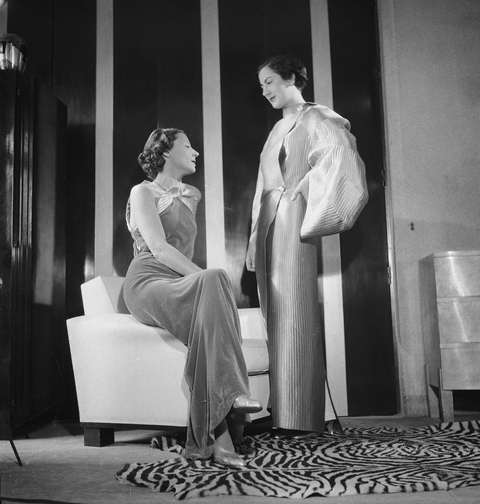
Copyright © AFP / Lipnitzki / Roger-Viollet – Jeanne Lanvin September 1934
History of Fashion 1930s – 1940s


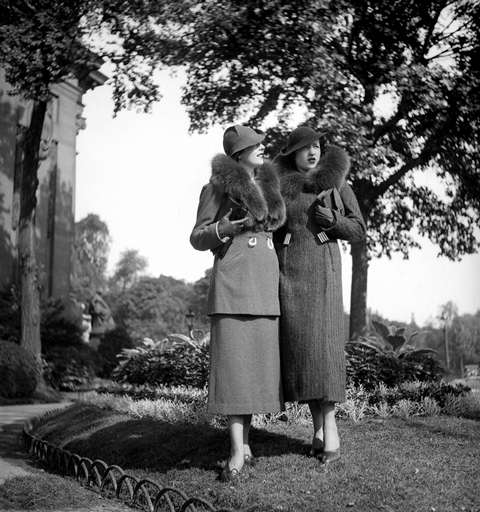
the best wedsite ever
ÉPOCA DO GLAMOUR NUNCA SE ESQUECIDA , LEMBRANÇAS DAS MULHERES ELEGANTES E PERFEITAS
Love the photos and look forward to reading more but two points about the film Gone with the Wind: Scarlett O’Hara’s poverty was due to the Civil War, not the Great Depression. The movie was released in 1940, so nothing to do with the 1930s.
Love, love these styles. I need and brown, black, and cream color in certain styles. Please let me see what you have and how much they are. Can’t wait yeahhhh